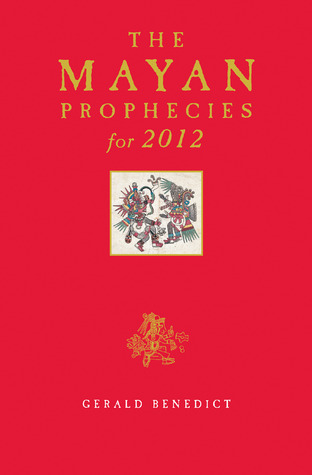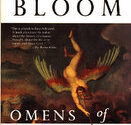The Prophecy Of The Return Of A Supreme Being
The Prophecy Of The Return Of A Supreme Being

“Would that he might return from the west, uniting us in commiseration over our present unhappy plight! This is the fulfilment of the prophecies of Katun 5 Ahua. … God grant that there may come a Deliverer from our afflictions, who will answer our prayers in Katun 1 Ahua!!
Chilam Balam of Tizimin
THE MESSAGE
The prophecy of the return of a Supreme Teacher or Being speaks of Quetzalcoat, known to the Maya as Kukulcan. However, there is a growing belief that this will not take the form of an actual return or reincarnation, but of people themselves taking on the character and attributes of the Supreme Being through their own spiritual evolution, to the point of overcoming the duality of the subject-object relationship. It is a prophecy the resonates with all religions.
COMMENTARY
Much lies behind this prophecy, and to understand its significance we need to trace in a little background.
Mayan mythology has, to a great extent, pivoted around Quetzalcoat, the plumed or feathered serpent, one of the principal gods of Mesoamerican religion, whom the Maya called, Kukulcan. His cult and its influence was not confined to the Toltec-Maya, and his emblem, the feathered serpent, is found throughout Mexico. Much of Mesoamerican religion, and one of the principal Mayan prophecies, was focused on the belief that Kukulcan would return. This belief was so deeply embedded, that in November 1519, Montezuma II, ruler of the Aztecs, virtually surrendered to Cortez believing him to be either an emissary of Quetzacoatl or the god himself, newly incarnated….
Aluna Joy Yaxk’in suggests that, ‘Kukulcan (the Feathered Serpent God, also known as Quetzalcoat) is to the New World what Christ is to Europe: the centre of a religious cosmology and the pre-eminent symbol of the civilized nations of Mesoamerica’.
It is hardly surprising that Spanish missionaries, like the 17th-century Father Avendano, rationalized the prophecy of the coming of Kukulcan as the Spanish conquest and the Maya’s conversion to Christianity. However, behind the missionary’s Christianization of the prophecies lies a genuine and very ancient native tradition. The American anthropologist and linguist Alfred Tozzer explained that, ‘these prophecies were doubtless adapted by the Spanish to proselytizing purposes but they were fundamentally to have been native accounts of the return of Kukulcan, one of the culture heroes of the Maya, and corresponding to the Quetzalcoat of the Mexicans’. It is therefore, beyond question, that the prophecies of the jaguar Priests are embedded in ancient tradition, and predate Christian influence.
Quetzalcoatl is frequently represented as a feathered or plumed serpent, and because of this serpent symbolism, the prophecies of the return of Quetzalcoatl/Kukulcan have important associations with the esoteric parallel of Hinduism’s secret knowledge of k’ulthanlini (kundalini) and the seven chakras, the body’s centres of energy. Although there is a tradition before the Christian era Mayan elders and priest travelled to India taking their knowledge with them, the influence remains conjectural. Even so, it is remarkable that the Maya taught about the seven power centres of the human body by which means the energy of the cosmos was assimilated and expressed. It may well be a striking example of parallel development. In Hindu teaching, kundalini represents a serpent-like potential curled at the base of the spine. Specific techniques of yoga and meditation can ‘awaken’ this serpent whose energy rises through the seven chakras; training in this technique under the necessary guidance of a guru or teacher is one of the many ‘paths’ to liberation. In Mayan mythology, the source of this energy lies in the Earth from where it begins to move; first, to the base of the spine, then through each of the seven chakras. This vital link between the Earth and the body is one of the central themes of the prophecies that speak of the urgent need of humanity to recover its intimate relationship with Nature…
Thus far, we have a prophecy that speaks of the return of a god which, understood literally or otherwise, will liberate earthbound energies, and revitalize our consciousness and the life of the spirit. Beyond this, the prophecy carries a message of broader significance pointing to a Supreme Being, that is, to the Mayan monotheism of one true god, Hunab K’u…
Most of the major world religions hold on to an expectation of the coming of a Supreme Being, Teacher or Saviour. Jews focus on the Messianic hope, Christians on the Second Coming of Christ, Islam on the return of Jesus the prophet and the Mahdi. Hinduism holds to traditions such as that of Kalki, Buddhism to a concept of the Maitreya, the ‘loving one’, the fifth and last of the five earthly Buddhas. Robert Boissiere’s account of the belief in an imminent return of a type of teacher or saviour among native and aboriginal people, suggests that their beliefs are similar to the Christian expectation of the ‘Second Coming’ of Jesus. Each of these traditions, preserving as they do the myth of a returning saviour or leader, also have in common the assurance that the return will be linked to a time when both humanity and the Earth are at risk.”
The Mayan Prophecies for 2012
Gerald Benedict, Watkins (Sep 2 2008)
“This Power is placed in the triangular bone which is called as sacrum, which means Greeks knew about this centre. They very well knew about it, that’s why they called it sacred, sacrum. In many countries there has been a manifestation that they know about this particular Power.
I happened to go to Colombia where I collected an authentic antique copy of the antique necklace. The necklace had at its bottom a Kundalini and even the earrings had the Kundalini, but, surprisingly, it was from the Indians of America, though it is now kept in the museum in Colombia. It was in America that people knew about Kundalini, definitely absolutely in three and a half coil they had done this pattern very well. Is very surprising that it was done even before Columbus came here.”
THE MOTHER: Messiah-Paraclete-Ruh-Devi
Philadelphia, USA—Oct 15, 1993
Apokalypsis: The fulfillment of eschatological instruction by the Paraclete in the Age to Come promised by Jesus at the Last Supper
An apocalypse (Greek: apokalypsis meaning “an uncovering”) is in religious contexts knowledge or revelation, a disclosure of something hidden, “a vision of heavenly secrets that can make sense of earthly realities.” (Ehrman 2014, 59)
“An apocalypse (Ancient Greek: apokalypsis … literally meaning “an uncovering”) is a disclosure or revelation of great knowledge. In religious and occult concepts, an apocalypse usually discloses something very important that was hidden or provides what Bart Ehrman has termed, “A vision of heavenly secrets that can make sense of earthly realities”. Historically, the term has a heavy religious connotation as commonly seen in the prophetic revelations of eschatology obtained through dreams or spiritual visions.” Wikipedia 2021-01-09
Total number of recorded talks 3058: Public Programs 1178, Pujas 651, and other (private conversations) 1249“The Paraclete will come (15:26; 16:7, 8, 13) as Jesus has come into the world (5:43; 16:28; 18:37)… The Paraclete will take the things of Christ (the things that are mine, ek tou emou) and declare them (16:14-15). Bishop Fison describes the humility of the Spirit, ‘The true Holy Spirit of God does not advertise Herself: She effaces Herself and advertises Jesus.’ …
It is by the outgoing activity of the Spirit that the divine life communicates itself in and to the creation. The Spirit is God-in-relations. The Paraclete is the divine self-expression which will be and abide with you, and be in you (14:16-17). The Spirit’s work is described in terms of utterance: teach you, didasko (14:26), remind you, hypomimnesko (14:26), testify, martyro (15:26), prove wrong, elencho (16:8), guide into truth, hodego (16:13), speak, laleo (16:13, twice), declare, anangello (16:13, 14, 15). The johannine terms describe verbal actions which intend a response in others who will receive (lambano), see (theoreo), or know (ginosko) the Spirit. Such speech-terms link the Spirit with the divine Word. The Spirit’s initiatives imply God’s personal engagement with humanity. The Spirit comes to be with others; the teaching Spirit implies a community of learners; forgetful persons need a prompter to remind them; one testifies expecting heed to be paid; one speaks and declares in order to be heard. The articulate Spirit is the correlative of the listening, Spirit-informed community.
The final Paraclete passage closes with a threefold repetition of the verb she will declare (anangello), 16:13-15. The Spirit will declare the things that are to come (v.13), and she will declare what is Christ’s (vv. 14, 15). The things of Christ are a message that must be heralded…
The intention of the Spirit of truth is the restoration of an alienated, deceived humanity… The teaching role of the Paraclete tends to be remembered as a major emphasis of the Farewell Discourses, yet only 14:26 says She will teach you all things. (Teaching is, however, implied when 16:13-15 says that the Spirit will guide you into all truth, and will speak and declare.) Franz Mussner remarks that the word used in 14:26, didaskein, “means literally ‘teach, instruct,’ but in John it nearly always means to reveal.” (Stevick 2011, 292-7)
The Holy Spirit as feminine: Early Christian testimonies and their interpretation,
Johannes van Oort, Radboud University, Nijmegen, The Netherlands
Department of Church History and Church Polity, Faculty of Theology, University of Pretoria, South Africa





